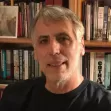Exclusives
BLOG POST
Writers Strike Opens Door For Infrastructure
<p>The strike has begun! Negotiations have broken down between the Writers Guild of America and the Alliance of Motion Picture and Television Producers, forcing Hollywood's TV and movie writers into a strike. <br /><br />What, you may be asking yourself, does this have to do with planning? Well, to put it bluntly, this strike is arguably the most important opportunity in American history for the widespread development of infrastructure and public works projects.<br />
BLOG POST
Slicing Water Planning With Okham's Razor
<p style="margin: 0in 0in 0pt" class="MsoNormal"><font face="Times New Roman" size="3">I first learned of </font><a href="http://dictionary.reference.com/browse/ockham's%20razor"><font face="Times New Roman" size="3" color="#800080">Okham’s Razor</font></a><font face="Times New Roman" size="3"> in an undergraduate economics class. Also called the Law of Parsimony, the idea states that the simplest of two competing ideas or theories is preferable to the more complicated one. </font></p>
BLOG POST
Whither the Region? Good Question.
<p>Last week I attended the <a href="http://www.dcp.ufl.edu/sacrph/conference/conference.html">Society of American City and Regional Planning History</a> (SACRPH) conference in Portland, Maine. The conference attracted a variety of notable planners and historians to my hometown for sessions on everything from radical 1970s public participation exercises to best practices in waterfront planning.</p><p> At the conference, outgoing group president and historian Greg Hise gave a provocative lecture titled “Whither the Region, or Why Ought There to Be an ‘R’ in SACRPH?” In the talk he described how he believed there was a declining interest in the organization in studying regions, pointing out that the word was declining in use in the titles of papers presented at recent conferences.</p>
BLOG POST
Place Trumps Mobility Equals Paradise
<p class="MsoNormal">Although it is sometimes difficult to recognize in day-to-day planning activities, our ultimate goal is to make the world better, that is, to help create paradise on earth. It’s a tough job, but somebody’s got to do it!<br /> <br /> There are two different and often conflicting concepts of how to create paradise. It is important that planners understand the differences between them.</p>
BLOG POST
World Urbanists Take Manhattan - Addendum
<p><span style="font-size: 10pt; font-family: Verdana">Some of you may remember my observations in an earlier post on the wonderful event I participated in earlier this year, with New York's Forum for Urban Design. Its rare indeed to get the opportunity to discuss and debate issues of urbanism over 2 days with the chief planners for New York, Boston, London, Singapore and Toronto. Months later, I'm still thinking about some of the perspectives I debated about with my peers in these great cities. You can see my earlier comments on the discussion, titled "World Urbanists take Manhattan: Lessons learned and left" at: </span></p><p><span style="font-size: 10pt; font-family: Verdana"><a href="/node/24956">http://www.planetizen.com/node/24956</a> </span></p>
BLOG POST
Producing Learning vs. Receiving Instruction: Tips on How to be a Terrific Student
<p class="MsoNormal">As education has become more expensive students wonder about what they are getting for their money. Evaluations of faculty, rankings of programs, and internet chat-room gossip all aim to find how to purchase the best value for money given a specific set of preferences. However, it is a misunderstanding to see students as primarily consumers of instruction. Rather the best students collaborate with faculty and other students to produce their own learning. </p> <p class="MsoNormal">What does this mean? In planning, as an applied profession, the activity of producing learning has a number of components. The following represent just a few of these mechanisms.</p>
BLOG POST
Top Ten Reasons...
<p>Over the past three months, my girlfriend and I have made three trips to the suburbs of Miami. Twice to the Whole Foods we desperately lack on Miami Beach (Yes, Wild Oats is okay, but for us food snobs it just does not compare) and once to the brand new, soul-killing, 283,000 square foot IKEA to partially outfit our 450 square foot South Beach studio apartment. </p>
BLOG POST
The Results Are In: Residential TODs Produce 50% Fewer Car Trips
<p style="margin: 0in 0in 0pt" class="MsoNormal"><font size="3"><font face="Trebuchet MS">You drank the Kool-Aid; you know that if you link transit and land use to create transit-oriented development (TOD) the result is fewer car trips and a host of benefits. From Portland to Miami, Boston to Los Angeles, a record number of TODs are being built in the US. Yet most bankers, developers and regulators are drinking from a different cup. As a result the majority of new development adjacent to transit stops in America has been built in a manner oblivious to the fact that a rail stop is nearby.
FEATURE
Man At Work
Seattle activist Jim Diers takes his expertise on cultivating neighbor power 'Down Under'.
BLOG POST
Horsepower vs Horse Power and Sustainability
<p style="margin: 0in 0in 0pt" class="MsoNormal"><font face="Times New Roman" size="3">How sustainable is the internal combustion engine? The answer depends, in part, on your historical perspective. This point becomes startlingly evident in a recent article by UCLA doctoral student Eric Morris in the most recent issue of </font><a href="http://www.uctc.net/access/access30.shtml"><font face="Times New Roman" size="3" color="#800080">Access magazine</font></a><font face="Times New Roman" size="3">. The magazine publishes accessible versions of academic research and is published by the University of California Transportation Center at Berkeley. </font></p>
BLOG POST
The Future of Presence
<p> I spent a few days last week in Newcastle, England - a real gem of a town for tech history enthusiasts and urbanists. Newcastle is where the first steam trains and railways were built at the dawn of the industrial revolution. It was the <a href="http://www.bbc.co.uk/history/british/victorians/launch_ani_rocket.shtml">demonstration</a> of Robert <a href="http://en.wikipedia.org/wiki/Stephenson's_Rocket">Stephenson's </a><em><a href="http://en.wikipedia.org/wiki/Stephenson's_Rocket">Rocket</a></em> in 1829 in Newcastle that you might mark as the beginning of mass mechanical mobility.
BLOG POST
An unheralded conference
<p><span style="font-size: 9pt; font-family: Verdana">I had the opportunity to spend a day at the <a href="http://www.vacantproperties.org/index.html">Vacant Properties</a> conference late last month which, if you’re not familiar with the “movement,” you should be.<span> </span>Granted it’s not for everyone.<span> </span>At the opening plenary session, the moderator asked “who is here from a weak market city?”<span> </span>A room full of hands went up with a collective giggle.<span> </span>It felt like an AA meeting for cities.<span> </span>Admitting you have a problem is the first step toward addressing it.<span> </span></span><span style="font-size: 9pt; font-family: Verdana"> </span></p>
BLOG POST
Planning By The Plate
<p>Most people don't know anything about planning. Sure, they may understand the general gist of it, but many planning concepts just haven't yet made it into the public consciousness. In an effort to accelerate the education of the public, here's an easy-to-use pictorial guide that relates some of those not-so-familiar planning concepts to something we're all familiar with: food.</p>
BLOG POST
Are planners ready for the Drew Carey (not so free) freeway?
<p style="margin: 0in 0in 0pt" class="MsoNormal"><font face="Times New Roman" size="3">Technology creates new challenges and opportunities, and this came home to me a couple of weeks ago when I was previewing a rough cut of </font><a href="http://www.reason.tv/video/show/6.html"><font face="Times New Roman" size="3" color="#800080">Gridlock: Hell on Wheels</font></a><font face="Times New Roman" size="3">, a video on traffic congestion released by </font><a href="http://www.reason.org/"><font face="Times New Roman" size="3" color="#800080">Reason Foundation</font></a><font face="Times New Roman" size="3"> today. In the video, Comedian Drew Carey makes the following off-the-cuff comment on a morning drive-time radio show: “I would love to own a freeway in LA.” </font></p>
BLOG POST
Wireless, Connected, Productive Transit - Formula for Hyper-Sprawl?
<p> There are lots of Wi-Fi buses popping up in Northern California. The <a href="http://www.nytimes.com/2007/03/10/technology/10google.html">Google shuttle</a> from San Francisco to the Valley has been running for a while and I think Yahoo! has a similar service, but I saw this <a href="http://www.actransit.org/news/articledetail.wu?articleid=ae8a49cd">Wi-Fi enabled AC Transit bus</a> (that's Alameda County folks) crossing the Dumbarton Bridge last week. Apparently, the service is being subsidized by a grant from the Alameda County Congestion Management Agency. </p>
BLOG POST
Acronym Atrocities Afoot in Washington
<p> To paraphrase the New York Times' summation of the Anaheim Angels' rhetorical exodus to Los Angeles a few years ago: some ideas are so stupid that you just have to stand back and watch. To that I would add, some things are so stupid that they deserve derision no matter how long ago they occured. Though it crawled out from the Senate floor in the summer of 2005, SAFETEA-LU -- the $240 billion federal transportation bill -- has, for the past two years, gotten off way too easy. </p>
BLOG POST
Trusting the Local (but double-checking with GPS)
<p style="margin: 0in 0in 0pt" class="MsoNormal"><span style="font-size: 11pt; font-family: 'Janson Text'">I live a ten-minute cab ride from the airport. I love it. Many a morning, I have stumbled down the porch steps in flip-flops and a business suit, carrying an overnight bag and high heels to make a flight in an hour’s time. Several weeks ago, I stepped into a cab and chirped my usual, “Good morning—National Airport, please!” and settled back into the seat, ready to finish applying eyeshadow. </span></p><p><span style="font-size: 11pt; font-family: 'Janson Text'">“Do you know how to get there?,” the driver asked.</span></p>
BLOG POST
Comprehensive Evaluation of Congestion Costs and Solutions
<p class="MsoNormal">The newest Texas Transportation Institute <em><a href="http://mobility.tamu.edu/">Urban Mobility Report</a></em> was recently released, stimulating discussion of congestion costs and potential solutions. Here are some things you should know when evaluating these issues.</p>
BLOG POST
A Guide to Taser-Free Public Meetings
<p><font face="Times New Roman" size="3"> </font><font size="3"><font face="Times New Roman">We all saw it on the Internet—the fellow at a public meeting being hauled away from the microphone before getting wrestled to the floor and tasered during a Q&A with John Kerry. Fortunately, silencing argumentative speakers with a taser is not a common occurrence at most public meetings. While I might confess that there have been meetings where, in retrospect, one might have secretly wished one was armed with a stun gun, facilitators generally try to avoid confrontation. Yet there’s no denying that sometimes people show up at public meetings looking for a fight, begging for outrage, and hoping to irritate and inflame.
Pagination
City of Costa Mesa
Licking County
Barrett Planning Group LLC
HUD's Office of Policy Development and Research
Mpact Transit + Community
HUD's Office of Policy Development and Research
Tufts University, Department of Urban and Environmental Policy & Planning
City of Universal City TX
ULI Northwest Arkansas
Urban Design for Planners 1: Software Tools
This six-course series explores essential urban design concepts using open source software and equips planners with the tools they need to participate fully in the urban design process.
Planning for Universal Design
Learn the tools for implementing Universal Design in planning regulations.
































